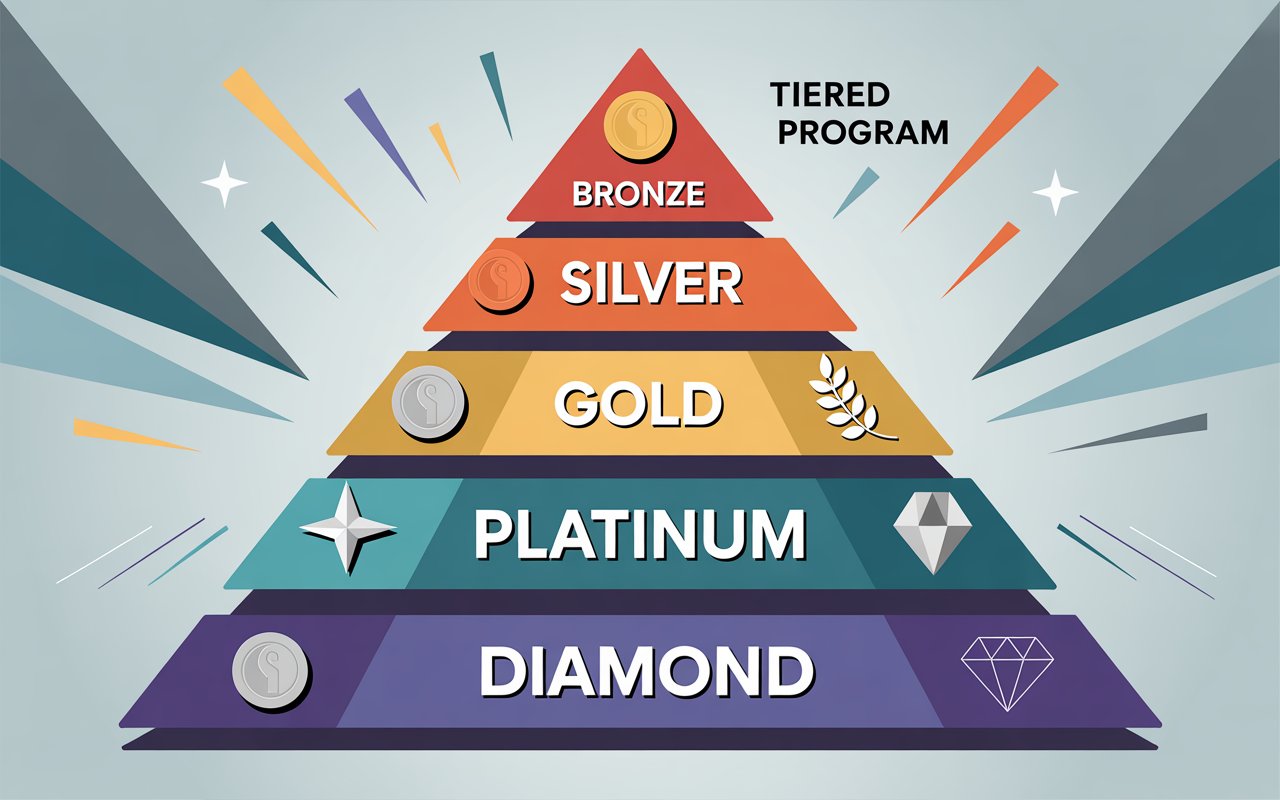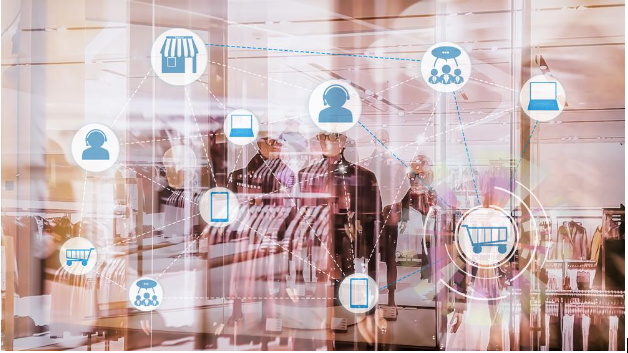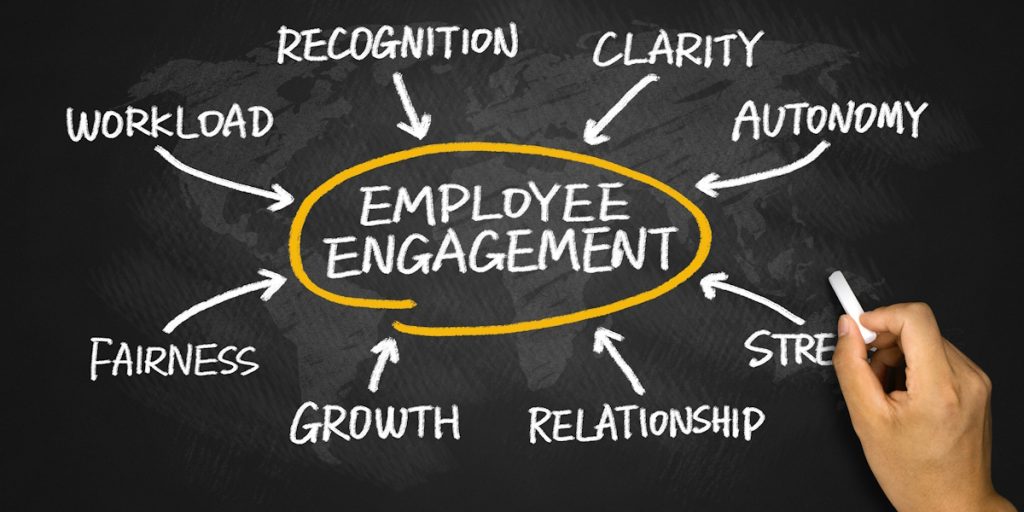Many businesses try to keep all customers happy by offering uniform services and rewards. While this may seem like a fair approach, it often overlooks how differently customers contribute to your business. Some shop regularly, spend more, or engage more frequently—yet they receive the same benefits as someone who shops once a year. This lack of differentiation can lead to disengagement from your most valuable clients.
A one-size-fits-all loyalty program doesn’t reflect the reality of how customer relationships work. Not all clients are the same, so why treat them that way? That’s where tiered loyalty programs come in. These systems recognize customer value by offering rewards based on levels of activity, spend, or other behaviors. When designed well, loyalty tiers create a sense of progress, exclusivity, and personalized engagement.
What Are Tiered Loyalty Programs?
Tiered loyalty programs segment customers into levels, with each tier offering unique rewards or perks. Typically, customers move up the tiers by meeting specific milestones—like spending a certain amount or making repeated purchases. The higher the tier, the better the rewards.
These systems are widely used across industries, from retail and hospitality to travel and food services. Their popularity is growing because they are effective at increasing customer retention and building emotional loyalty.
Why Many Loyalty Programs Fall Short
A common problem with loyalty programs is flat rewards. When everyone gets the same discount or benefit, there’s little motivation to stay loyal or increase engagement. Customers don’t feel special—and that’s a missed opportunity.
Customers today expect more personalization. They want brands to recognize their loyalty in a meaningful way. That’s why loyalty tiers matter. They provide both structure and incentive.
Why One-Size-Fits-All Doesn’t Work?
Treating every customer the same way might feel fair, but it misses the point of what keeps people coming back. When a loyalty program doesn’t recognize differences in behavior, spending, or engagement, it fails to reward the people who are helping your business grow the most. High-value clients often expect more—they spend more, refer others, and stick around longer. If they receive the same benefits as casual buyers, they may feel overlooked.
A flat reward system also makes it difficult to motivate customers to increase their activity. If there’s no advantage to spending more or staying loyal, why would anyone bother? Tiered programs solve this by creating milestones and incentives. Customers see a clear path to better rewards, which encourages them to stay involved. In contrast, a one-size-fits-all approach leads to stagnation, lower retention, and weaker brand loyalty.
Benefits of Tiered Loyalty Programs
Drives Higher Engagement and Retention
When clients know they can access better rewards by reaching the next tier, they are more likely to return and spend more. This continuous engagement keeps your brand top-of-mind and encourages repeat business.
Prioritizes Valuable Customers
Not all customers provide the same value. A small group often drives most of the revenue. Tiered loyalty programs allow you to focus on these high-value clients without ignoring the rest. It’s a balanced approach to customer retention.
Enables Personalized Offers
Customer segmentation loyalty programs make it easy to deliver targeted messaging. You can create special campaigns or offers for high-tier customers, while using different strategies to boost mid-tier or new members.
Builds Brand Affinity
People love to feel important. When your customers feel seen and rewarded for their loyalty, they’re more likely to form a deeper connection with your brand. That emotional bond is what turns regular customers into loyal advocates.
How to Build Loyalty Tiers That Make Sense
Base Your Tires on Real Customer Data
Start by analyzing your customer base. Who are your top spenders? How often do they purchase? What products or services do they love? Use these insights to set tier thresholds that are both achievable and motivating.
For example:
Customers spending under $500 per year could fall into Tier 1.
Those spending between $500 and $1,500 might be placed in Tier 2.
High spenders exceeding $1,500 annually would qualify for Tier 3.
You can also include other metrics, like frequency of visits or referrals.
Keep the Tier Structure Simple
Customers shouldn’t need a guidebook to understand your program. Clear tier names and transparent rules help build trust. Choose labels like “Basic,” “Preferred,” and “Elite” or stick with familiar terms like “Silver,” “Gold,” and “Platinum.”
Match Rewards to Customer Value
Each tier should offer rewards that reflect the effort or spend required to reach it. Basic tiers might include birthday discounts or early sale access, while top tiers could include exclusive invites, priority support, or personalized service.
Encourage Progression Between Tiers
The goal is to get customers to climb the ladder, not stay stuck in the first tier. Make each next level feel like an achievement. Use email updates, app notifications, and dashboards to show progress.
Examples of Loyalty Tiers That Work
Sephora’s Beauty Insider
This program has three tiers: Insider, VIB, and Rouge. Each tier brings better rewards—from deluxe samples to early product access. It’s simple, motivating, and well-integrated with the customer experience.
Starbucks Rewards
Customers earn stars with every purchase. More stars mean more rewards, and consistent buyers get access to exclusive perks. The program is mobile-friendly and encourages regular visits.
ALDO’s Crew Program
ALDO uses a three-tier model to reward repeat customers. Members earn points, receive special offers, and access early releases. The structure makes it easy to understand and engaging to follow.
Common Mistakes to Avoid
Overcomplicating the System
Too many rules or confusing benefits can turn customers away. Simplicity leads to better participation and fewer support requests.
Ignoring Lower Tiers
While high-value customers are important, don’t forget the lower tiers. They are your future top-tier clients. Keep them engaged with small but meaningful rewards and encouragement to move up.
Failing to Update or Promote the Program
A loyalty program isn’t set-it-and-forget-it. Keep it fresh with seasonal perks, bonus point campaigns, or surprise rewards. Also, make sure your customers know about it through email, social media, and in-store signage.
Final Thoughts
Not all customers bring the same value—and that’s okay. The goal is to recognize and reward customers in ways that reflect their relationship with your brand. A well-designed loyalty tier program helps you do just that.
If you’re still offering the same rewards to everyone, it might be time to re-evaluate. Treating your top clients differently isn’t unfair—it’s smart. The more you understand your customers and tailor your loyalty structure to match their behavior, the more value you’ll see in return.
Ready To Stop Treating All Clients The Same And Start Building Real Loyalty?




